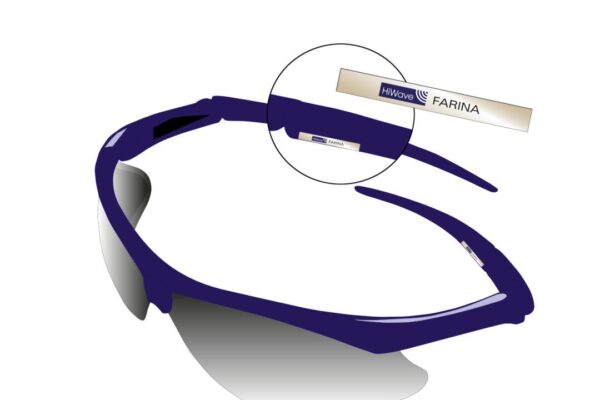
New transducer turns glasses into headphones without blocking the ear canal
When mounted onto the frames of spectacles, such as those used for 3D gaming, the Farina transducer stimulates the outer ear, or pinna, with a broadband audio signal, turning the spectacles into headsets. The user then hears via a combination of airborne sound and soft tissue conduction into the inner ear.
"Glasses that combine visual and audio input to the user are going to be a huge opportunity for us," said James Lewis, HiWave’s CEO. "The goal for our customers will be to create eyewear that incorporates miniaturised display and audio components, and are completely wireless. With Farina audio, the mini-transducers will be embedded into the arms of the glasses where they touch the ears, and the amplifier circuitry will be a single chip that, together with the Bluetooth or other wireless chip will disappear into the frame. Our low-power techniques minimize the battery size so that this to can become an integral part of the frame. I believe that technology will open the eyes of product planners, marketing executives and industrial designers to consumer electronics concepts that have never been possible to implement before."
Farina transducers effectively turn the ear into a micro-loudspeaker but do not block external sounds that are received in the normal way via the ear canal. The human brain is adept at differentiating between the audio sources so the technology is ideal for sensory-immersive applications such as multi-user gaming, and augmented and virtual reality. It also provides safety benefits for sportsmen such as cyclists because they can listen to music on the move whilst maintaining complete awareness of their surroundings, including approaching cars.
The patents filed for the new technology include techniques for delivering multi-octave audio from a vibrating beam of miniaturised dimensions, and the methodology for matching the mechanical impedance of ceramic materials to the soft tissues of the human ear.
HiWave is currently demonstrating proof of concept to large companies and will have production-ready transducers available in Q4 2012. The Farina ceramic vibrating beam measures 25mm x 3mm x 0.6mm and delivers a multi-octave audio frequency range with strong bass and clear mid-to-high frequencies.
www.hiwave.com
 If you enjoyed this article, you will like the following ones: don't miss them by subscribing to :
eeNews on Google News
If you enjoyed this article, you will like the following ones: don't miss them by subscribing to :
eeNews on Google News




